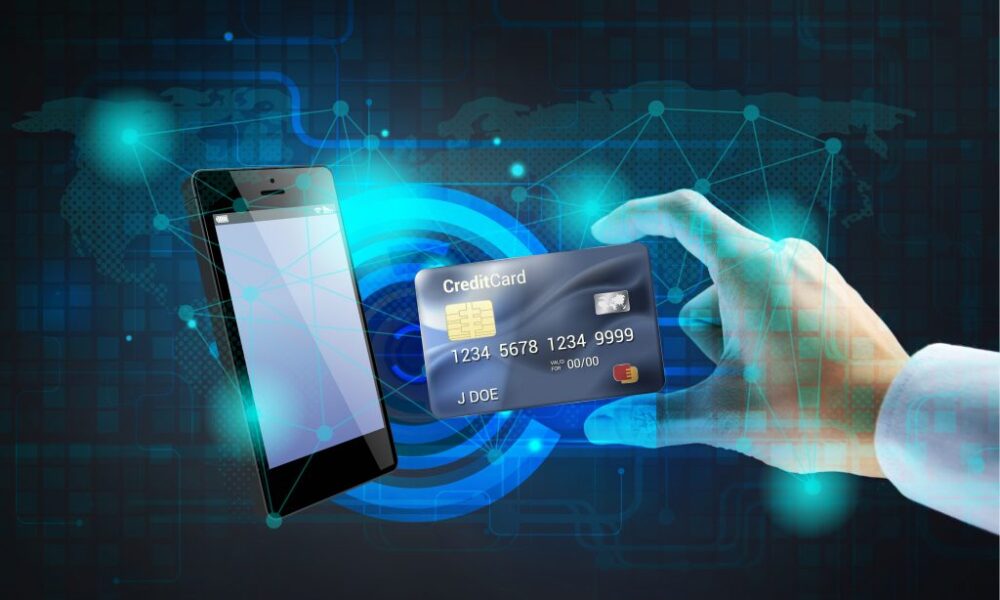The Future of Payment Gateways: Emerging Trends and Industry Insights

Payment gateways are changing quickly to keep up with the needs of a digital economy. This shift includes more cross-border transactions and changing customer expectations. Developments in technologies like AI, blockchain, and real-time payments are pushing this change. They provide businesses with safer, faster, and smoother ways to manage transactions around the world. It is important for companies to understand these new trends to remain competitive in a rapidly evolving payments environment.
Emerging Technologies Shaping Payment Gateways
Payment gateways are integrating advanced technologies to improve security, efficiency, and user experience. These innovations address growing demands for faster transactions and fraud prevention while enabling broader accessibility.
Artificial Intelligence and Machine Learning Integration
AI and machine learning enhance payment gateways by enabling real-time fraud detection and risk assessment. These technologies analyze transaction patterns to identify anomalies and block suspicious activity before it affects users.
Machine learning algorithms continuously learn from data, improving accuracy in detecting fraudulent behavior. This reduces false positives, allowing genuine transactions to proceed smoothly, which benefits merchants and customers alike.
In addition, AI powers chatbots and personalized customer support for payment services. It automates routine queries, improving response times and allowing human agents to handle more complex issues.
Blockchain and Decentralized Finance Solutions
Blockchain introduces transparency and security to payment processing by creating immutable transaction records. Its decentralized nature reduces reliance on single points of failure, enhancing system resilience.
Decentralized finance (DeFi) uses blockchain technology to facilitate peer-to-peer transactions without intermediaries. This can lower costs and increase accessibility, especially in regions with limited banking infrastructure.
Smart contracts automate payment execution under predefined conditions, reducing manual processing and settlement delays. This technology streamlines cross-border payments by minimizing intermediaries and currency exchanges.
Contactless and Biometric Authentication Methods
Contactless payments use NFC and RFID technology to enable secure transactions with a simple tap or wave. These methods speed up checkout while reducing physical contact, which has gained importance post-pandemic.
Biometric authentication, such as fingerprints, facial recognition, or iris scans adds a strong layer of security. It helps verify user identity quickly and reduces dependency on passwords or PINs that can be stolen or forgotten.
The combination of contactless and biometric methods improves convenience without compromising security. This dual approach is driving widespread adoption in retail, mobile wallets, and banking applications.
Globalization and Cross-Border Payment Innovations
Payment gateways are adapting to increased international trade by enabling diverse currencies and faster transactions. Innovations focus on improving user experience, reducing settlement times, and integrating real-time capabilities.
Multi-Currency Processing and Localized Experiences
Payment gateways now support multiple currencies, allowing businesses to accept payments in the customer’s local currency without conversion delays. This reduces friction and currency risk for both merchants and buyers.
Localized experiences extend beyond currency. Gateways increasingly offer tailored payment methods, languages, and compliance with regional regulations. These factors improve trust and conversion rates in diverse markets.
Flexible currency solutions often integrate with APIs for real-time exchange rates, supporting more accurate billing and reconciliation. This adaptability is essential for global e-commerce and cross-border trade.
Seamless International Settlements
International settlements historically faced delays due to intermediary banks and complex compliance checks. Modern gateways streamline this by leveraging direct correspondent banking relationships and technologies like blockchain to bypass intermediaries.
This leads to faster clearance times and reduced costs. Settlement transparency improves as gateways provide end-to-end tracking and automated compliance with anti-money laundering (AML) and know-your-customer (KYC) regulations.
Businesses benefit from predictable cash flow and simpler accounting processes. The shift reduces risks of transaction failures or disputes tied to cross-border transfers.
Expansion of Real-Time Payment Systems
Real-time payment systems are rapidly gaining traction in cross-border scenarios. These systems enable near-instant fund transfers, enhancing liquidity for businesses and consumers globally.
APIs and open banking infrastructures are key drivers, allowing seamless integration across platforms and countries. The growth in real-time payments is expected to exceed 25% of electronic cross-border payments by 2028.
Challenges remain, such as regulatory fragmentation and the need for standardization. However, faster settlement times and increased transparency are making real-time payments a preferred option for international transactions.
Regulatory Trends and Compliance Challenges
Global payment gateways face increasing regulatory pressure that affects their operations and innovation. Ensuring compliance with evolving requirements around data security, licensing, and fraud prevention is critical to maintaining trust and operational viability.
Data Privacy and Security Standards
Payment gateways must comply with stringent data privacy regulations like the EU’s GDPR and the California Consumer Privacy Act (CCPA). These rules enforce strict controls on handling, storing, and processing personal data.
Security standards such as PCI DSS remain mandatory to protect cardholder information. Gateways must implement encryption, tokenization, and real-time monitoring to detect and prevent breaches.
Non-compliance often results in significant fines and reputational damage. Therefore, continuous updates to cybersecurity frameworks and employee training are essential to managing risks in a dynamic threat landscape.
Licensing and Regional Regulations
Licensing requirements vary widely by region, creating a complex compliance environment for global gateways. For example, the U.S. regulates payment activities at both federal and state levels, requiring multiple licenses or approvals.
In contrast, the EU benefits from a harmonized framework under PSD2, enabling easier cross-border operations but requiring strong customer authentication (SCA).
Payment gateways must adapt rapidly to regional changes, such as new digital licensing regimes in Asia-Pacific or evolving consumer protection laws in Latin America. Failure to meet these can delay market entry or result in operational restrictions.
Anti-Fraud and AML Solutions
Fraud and money laundering remain top concerns for payment gateways. Increasing use of real-time payments raises complexity as settlement risks decline but fraud risks rise.
Regulators require strong anti-fraud measures, including identity verification, transaction monitoring, and suspicious activity reporting. Advanced analytics and machine learning tools are increasingly deployed to detect anomalies.
AML compliance involves customer due diligence and ongoing transaction screening. Gateways must ensure transparency and rapid response to potential breaches to avoid penalties.
Investment in compliance technology and collaboration with regulatory bodies is essential to balance security and operational efficiency.
Enhancing User Experience in Payment Gateways
Modern payment gateways prioritize smooth, flexible processes and tailored interactions to improve customer satisfaction and reduce friction in transactions. Efficiency, accessibility, and customization are key factors influencing these improvements.
Omnichannel Payment Integration
Payment gateways now support multiple platforms, such as web, mobile, in-store allowing users to switch seamlessly between channels. This integration ensures consistency and convenience in payment processing wherever customers shop.
Supporting diverse payment methods such as credit cards, digital wallets, and bank transfers within one system is crucial. It caters to varying preferences and regional differences, expanding a business’s reach.
Security features like tokenization and real-time fraud detection are embedded to protect user data across all channels. These measures increase trust and reduce transaction failures, directly enhancing user experience.
Personalized Checkout Flows
Leveraging data and AI, gateways analyze consumer behavior and preferences to streamline checkout steps. This personalization reduces redundant inputs and highlights preferred payment options, speeding up the process.
Customizing language, currency, and interface elements based on location or past activity helps users feel more comfortable and confident during transactions. This tailored approach also supports local compliance requirements.
Personalized error handling and support messaging guide users through issues effectively. This prevents abandonment and boosts conversion rates by addressing specific pain points in real time.
How to Find Payment Service Provider That Meets Future
Businesses need to prioritize flexibility and scalability when selecting a payment service provider. The ability to support multiple currencies, payment methods, and regions ensures smooth global operations.
Security and compliance remain essential. Providers must offer strong fraud protection and meet evolving regulatory standards to maintain customer trust and avoid penalties.
Convenience in integration and user experience drives adoption. A payment gateway that quickly integrates with online stores and apps reduces technical hurdles and enhances checkout speed.
To narrow down options, companies can use platforms offering detailed list of payment service providers. These platforms allow filtering by features such as transaction fees, supported countries, and integration options, enabling targeted searches tailored to business needs.
For example, businesses can explore extensive payment gateway catalogs to compare providers side-by-side. This helps identify solutions aligning with specific priorities like mobile payments or cryptocurrency support.
Key factors to consider include:
- Global reach and currency support
- Transparent fee structures
- Customer support and service reliability
- Technology compatibility and API quality
Leveraging specialized platforms simplifies the selection process. It guides businesses through available options and matches them with providers that align with their strategic goals and future payment trends. Using targeted search tools ensures choices remain relevant over time.

Source: The Future of Payment Gateways: Emerging Trends and Industry Insights



